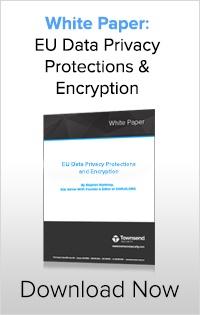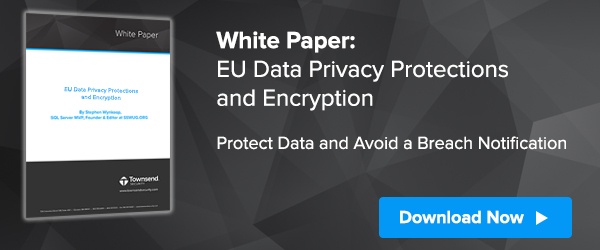 The European General Data Protection Regulation (GDPR) is a radical and transforming event in the information technology space. Due to go into full effect on May 25, 2018, it will require major changes to IT systems and they way organizations relate to their customers, employees, and external partners. It is hard to overstate the the impact of the regulation. Organizations of all sizes and types, and cloud service providers small and large, must adjust to the notion that people now fully own information about themselves - and companies outside of the EU zone are impacted, too.
The European General Data Protection Regulation (GDPR) is a radical and transforming event in the information technology space. Due to go into full effect on May 25, 2018, it will require major changes to IT systems and they way organizations relate to their customers, employees, and external partners. It is hard to overstate the the impact of the regulation. Organizations of all sizes and types, and cloud service providers small and large, must adjust to the notion that people now fully own information about themselves - and companies outside of the EU zone are impacted, too.
Article 17 of the GDPR focuses on the “Right of erasure”, also known as the “Right to be forgotten”. Here is a link to that section.
Let’s talk about how we can use encryption and key management to help meet the requirements of the legislation. Since deploying encryption will also help meet the privacy requirements of GDPR, the same technology can be used to implement Right of Erasure.
First, let’s look at the technology landscape related to encryption:
Encryption is one of the most well understood mechanisms for data privacy. There are well-established, mature standards for encryption and the related key management technologies. Most companies will use encryption to meet GDPR privacy requirements, and will be deploying encryption key management to protect the keys. There are mature encryption technology solutions available on all major enterprise operating systems and on all major cloud platforms. Protecting encryption keys is also well understood. Many organizations have already deployed encryption in some parts of their organizations, and GDPR will speed this process and extend protections across all parts of the data landscape.
The hardest part of getting encryption right has to do with creating, protecting, and deploying encryption keys. It is probably the hardest part of getting an encryption strategy right - and there are a lot of ways to get key management wrong:
- Storing the unprotected encryption key with the protected data
- Using weak protection methods to secure encryption keys
- Storing the encryption key directly in application code
- Using a weak encryption key - a password is an example of a weak key
- Not using strong, industry standard methods of generating an encryption key
- Not providing separation of duties and dual control around key management
There are lots of ways to get encryption key management wrong - and bad key management practices will result in GDPR compliance failures.
Fortunately, it is fairly easy to deploy good encryption key management that is affordable, easy to install and configure, and easy to integrate with your encryption strategy. A number of professional key management solutions are available to serve every enterprise operating environment. We have one (Alliance Key Manager), and others are available.
Now that we have a good encryption and key management strategy in place, let’s use it to meet the GDPR Right to Erasure.
Under GDPR Article 17 a need to erase personal information can be triggered by a number of events:
- A Data Subject (usually a person) can request erasure of personal information
- The personal information is no longer relevant from a business perspective
- A Data Subject withdraws consent and there is no overriding need or requirement to retain the data
- A Data Subject withdraws consent for processing their information
- Personal data has been unlawfully obtained or processed
That covers a lot of ground! It is not as simple as just responding to a request for erasure, we have to be aware of our actual need for information. And erasure triggers some secondary requirements:
- The Data Controller must attempt to remove data that has been made publicly available
- The Data Controller must inform third party Data Processors of the need to erase data
We have a lot of responsibilities under GDPR Article 17. How can we use encryption and key management to meet this requirement?
A key management approach:
Imagine that you assign a unique encryption key to each Data Subject (employee, customer, and so forth) and that you encrypt that person’s personal data in your databases with that unique and specific key. The time comes when must meet your obligations under Right of Erasure. Rather than go through every database table and storage server to delete the data, you could just delete the encryption key. Assuming you have strong encryption keys and industry standard key deletion processes, the deletion of the key is an effective way to zero the protected data without actually modifying the database. Data that is encrypted is unrecoverable if the key is no longer available.
There is one more added benefit to this approach - it effectively erases all of the data on your backups! Managing compliance with GDPR is especially difficult when it comes to off site backups of sensitive data. The ability to effectively erase data by erasing the encryption key without having to pull those backups out of storage is a huge cost and administrative saving!
The strategy described above is only defensible if you are encrypting the Data Subject’s information, if you are assigning them a unique encryption key, and if you are using an encryption key management solution that provably meets industry standards for key zeroization. Our key management solution does and you can get more information here.
We’ve touched just one aspect of GDPR. We will be talking more about GDPR in the days ahead.
Patrick

